Trees that grow in harsh environments, such as mountain crevices and cliffs, survive by twisting their branches, driving their roots deep below the surface, and stunting their size. This resilience inspired bunjae — the art of cultivating miniaturized trees. Bunjae artist and vendor Yu Sang-kyung nurtures trees that reflect a uniquely Korean sense of harmony and teaches how to care for them.
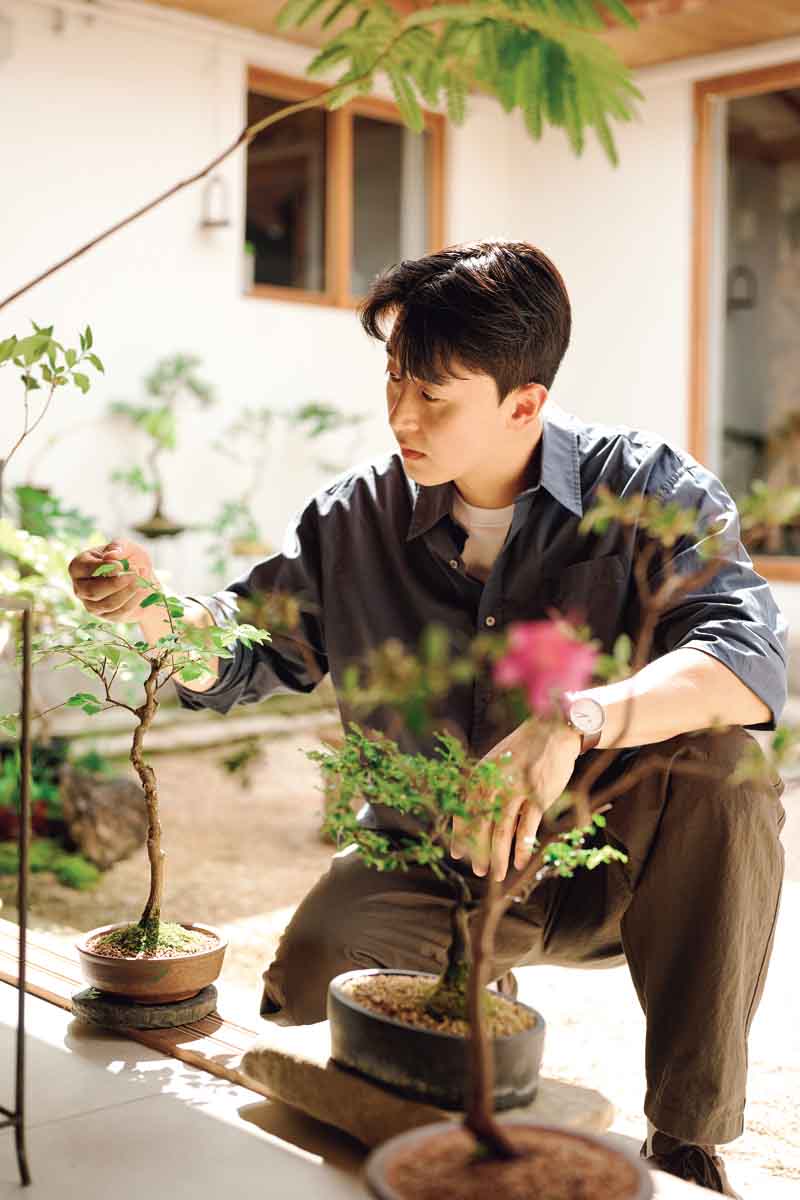
Seogan, operated by plant enthusiast Yu Sang-kyung, is more than a nursery — it’s a gallery. Rather than just buying plants from wholesalers and reselling them, Yu treats them as artworks, placing them in pots with moss and pebbles before putting them on sale. He visits horticultural farms most mornings and spends afternoons tending his plants.
Behind an inconspicuous door in Seochon, Seoul’s tranquil West Village, lies a small traditional Korean house with a central courtyard. This hanok is the home of Seogan, a bunjae gallery and shop operated by Yu Sang-kyung. From the knee-high bunjae trees to the carefully arranged gravel, weeds, and stacks of roof tiles in the courtyard, every detail reflects his attentive care.
GROWING UP IN NATURE
Bunjae refers to the art of planting trees and placing them with grass, moss, and pebbles in a palm-sized pot or to any plant or tree grown that way. Yu began nurturing bunjae as a hobby and eventually transitioned into a gallerist. He checks into his gallery almost every day and spends an hour or two tending to some forty plants.
“When I was little, I lived in Gwangyang in South Jeolla Province. The landscape was beautiful, and I grew up surrounded by nature — the mountains, trees, and the sea. When I moved to Seoul for university, I often went to the nearby mountains between classes.”
In short, Yu is a self-confessed nature geek. When he was in the mountains or strolling along roads, he stopped to observe grass, trees, and moss and created a collection of stones that caught his eye. When he moved into his own place, he began filling it up with plants.
“During my free time, I often visited botanical gardens or nurseries by myself. I collected old pots too. When I got a job after college, I worked during the week and spent my weekends tending to the plants. At one point, I had sixty to seventy plants in my house,” he says.
When there are living things in the house, people’s behavior tends to change. Yu became more diligent — trimming branches, moving pots so they would either get more sun or shade, repotting plants several times, and observing their growth day by day. Eventually, he felt he should learn how to care for them properly.
“I wondered whether I was using the right soil for each plant, pruning the branches correctly, or repotting them too often. And then I learned about bunjae.”
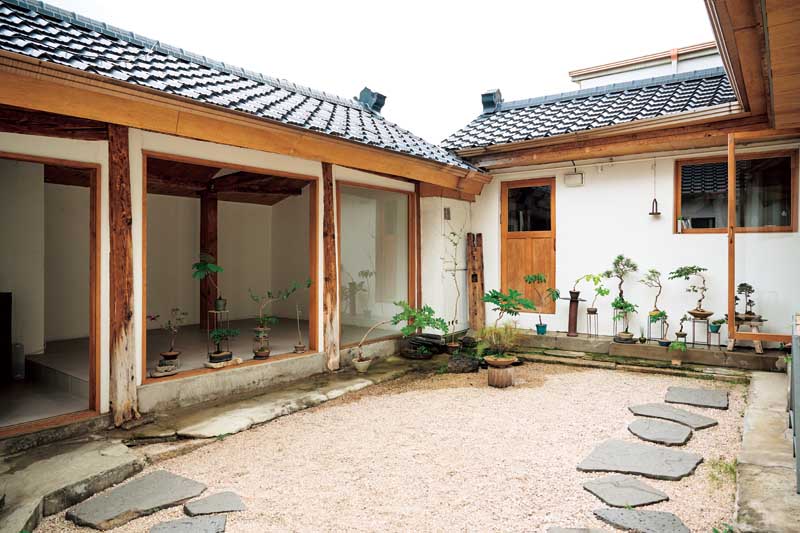
Nestled in a quaint Seochon alley, Seogan moves at the neighborhood’s unhurried pace. Yu offers one-day workshops and regular bunjae classes. The gallery also hosts brand collaborations in the form of pop-ups and occasional artist exhibitions.
MYTHS AND TRUTHS
Bunjae is often seen as an expensive, even contrived hobby, and that’s not entirely wrong. Growing and appreciating bunjae takes time: attention must be lavished on every single leaf and the way the branches fan out. In today’s world, dedicating so much time to a single pursuit can be considered a luxury.
“One time, a university student came into the shop and asked how much a bunjae cost. He said he’d come back later when he’d saved enough from his part-time job. It was not that he had plenty of time and money to spare. Rather, I think buying a bunjae is like paying for a bit of leisurely time,” Yu says.
Many people think of bunjae as trees unnaturally wired into shape or struggling to survive in tiny pots. Yu comes across such prejudices and misperceptions about bunjae in the one-day workshops that he holds, but he doesn’t shy away from addressing them.
“Growing a plant in a pot is artificial to begin with. Once a plant is potted, would it be right to just leave it as is? Plants in a confined environment need proper care. For example, pruning them just enough, or wiring the branches so they don’t compete for space. If you know trees, you never harm them; everything you do for them is guided by affection.”
In some seasons, a tree inevitably looks less than its best. In summer, with the heat and humidity, pests are a frequent concern and leaves often wilt. Bunjae are most beautiful to look at in spring and autumn. On a visit to Yu’s gallery at the end of June, all but a few azalea blossoms had fallen.
Yu’s approach is warm and accepting. “I don’t have any favorites. They all look beautiful, and even if some think they don’t, I like them just the way they are,” he says.
Bunjae are classified in accordance with the style or appearance of the trunk and branches. Trees with upright trunks, such as Korean firs and Japanese cedars, fall under the formal straight style (jikgan); those with slanted trunks, like Japanese black pine, under the slanting style (sagan); and those with downward-drooping branches under the cascade style (hyeonae). The most common type found at Seogan is the literati style — trees with long, slender trunks crowned with leaves at the top.
“I was drawn to this type from the beginning and only later learned it was the literati style — the kind of tree loved by Joseon Dynasty (1392–1910) scholars,” says Yu. “I like them even more now that I know their meaning: profound yet never boastful. It’s very much what I aspire to be.”
At Seogan, most of the bunjae are native Korean plants. Yu is especially fond of the long-stalked Chloranthus and Montbretia. He has dedicated himself to native trees and is now developing bunjae with a distinctly Korean aesthetic, drawing inspiration from the lightly colored ink paintings by scholars of the past.
ARTLESS AESTHETIC
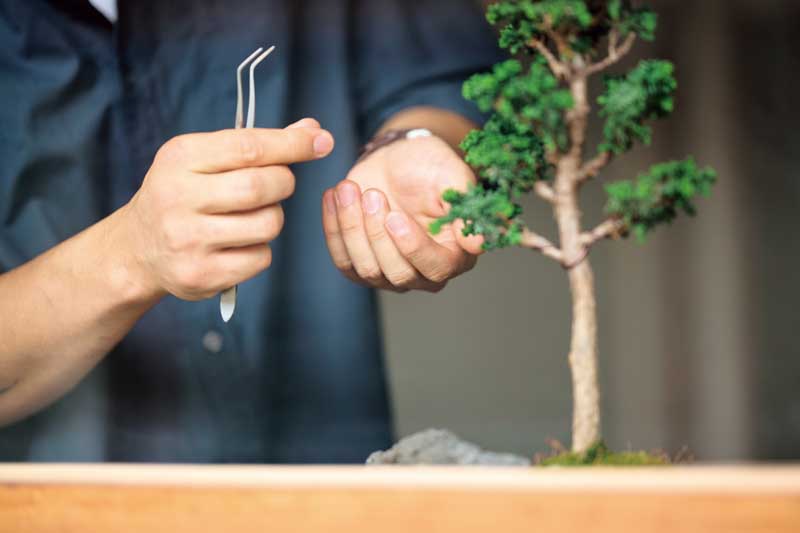
Yu believes every plant has its own silhouette and appeal. Through bunjae, he explores ways to bring those qualities to the fore, meticulously trimming leaves with tweezers.
One of Yu’s favorite genres of traditional Korean art is ink-wash painting, known for its generous use of negative space that evokes a quiet, contemplative beauty and subtle harmony among elements.
“Trees are painted with an easy, unassuming hand, and the mountains never feel threatening. Within those landscapes, humans are rendered small. It comforts me to think that we, as human beings, are trivial [in nature]. I hope visitors to Seogan sense something similar. If you quietly gaze at the plants without self-consciousness, you may feel yourself fade into nothing more than a single dot.”
A similar spirit underlies Korean bunjae. The art originated in China, and it is not clear when it reached Korea. However, as literature from the mid-Goryeo Dynasty (918–1392) mentions bunjae, we can assume that appreciation of miniature trees had already taken root by the 13th century. Korean bunjae differs from its Chinese and Japanese counterparts in its pursuit of a more natural beauty — the same kind of simple aesthetic found in the white porcelain (baekja) and humble maksabal (lit. a bowl for all purposes) that Yu treasures.
“I believe Korean beauty and style can be summed up in a single word: harmony. All the elements blend together, each holding its own while playing a distinct role in the overall balance. For example, after their flowers fall, the trees may be less attractive, but I don’t hide them away. To me, Korean beauty means accepting even those phases, and waiting for the next year, when the trees will be beautiful once more.”
During the extreme heat of summer and the cold of winter, Yu is concerned about the trees’ well-being and visitors’ experience. With this in mind, he is considering a reservation system for Seogan, which currently opens from Thursday to Sunday, between 1 p.m. and 6 p.m.
As he cares for his plants, Yu contemplates what lies beneath their surface. “Lately, I find myself thinking a lot about roots. We usually only see a tree from the trunk up to its leaves. But when I repot the trees, I come across these thick, gripping roots. Knowing they are holding on for dear life — it leaves me in awe.”
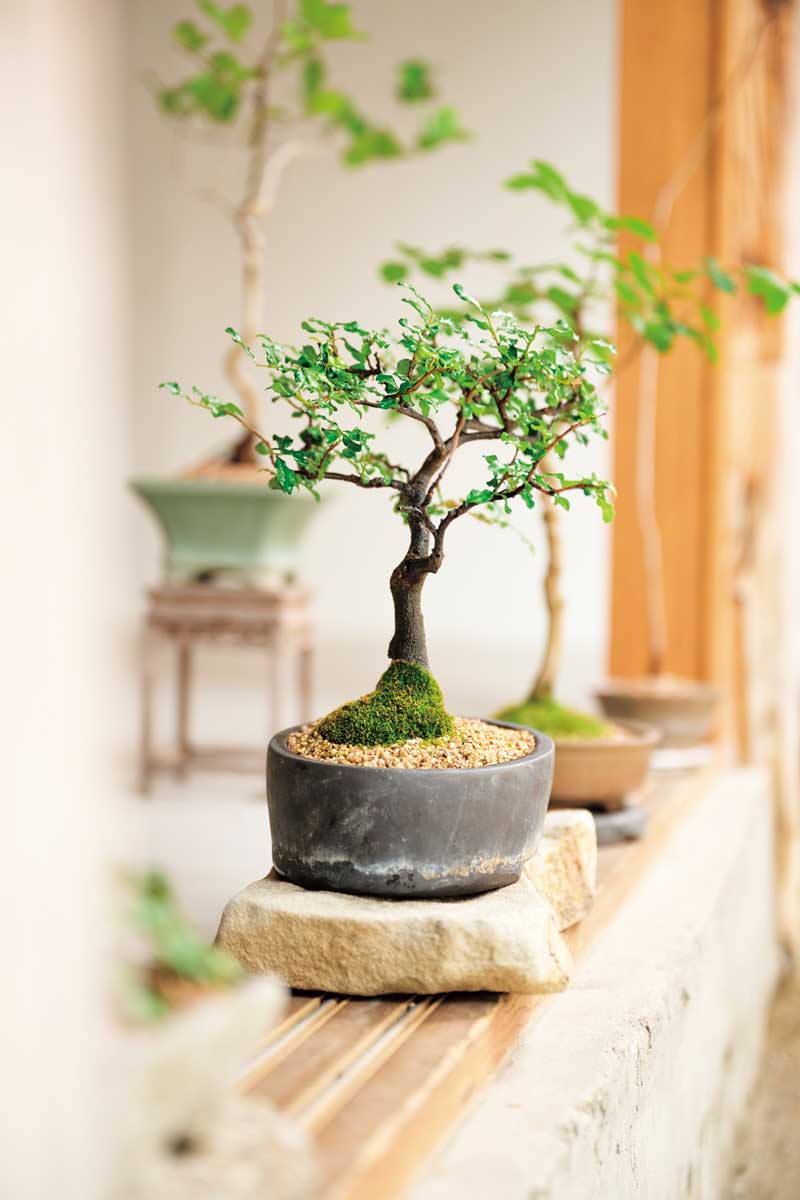
Bunjae plants are placed throughout the gallery. Growing bunjae brings year-round pleasure; they blossom in spring and summer; ripen their berries in fall; and shed leaves till their branches are bare in winter.
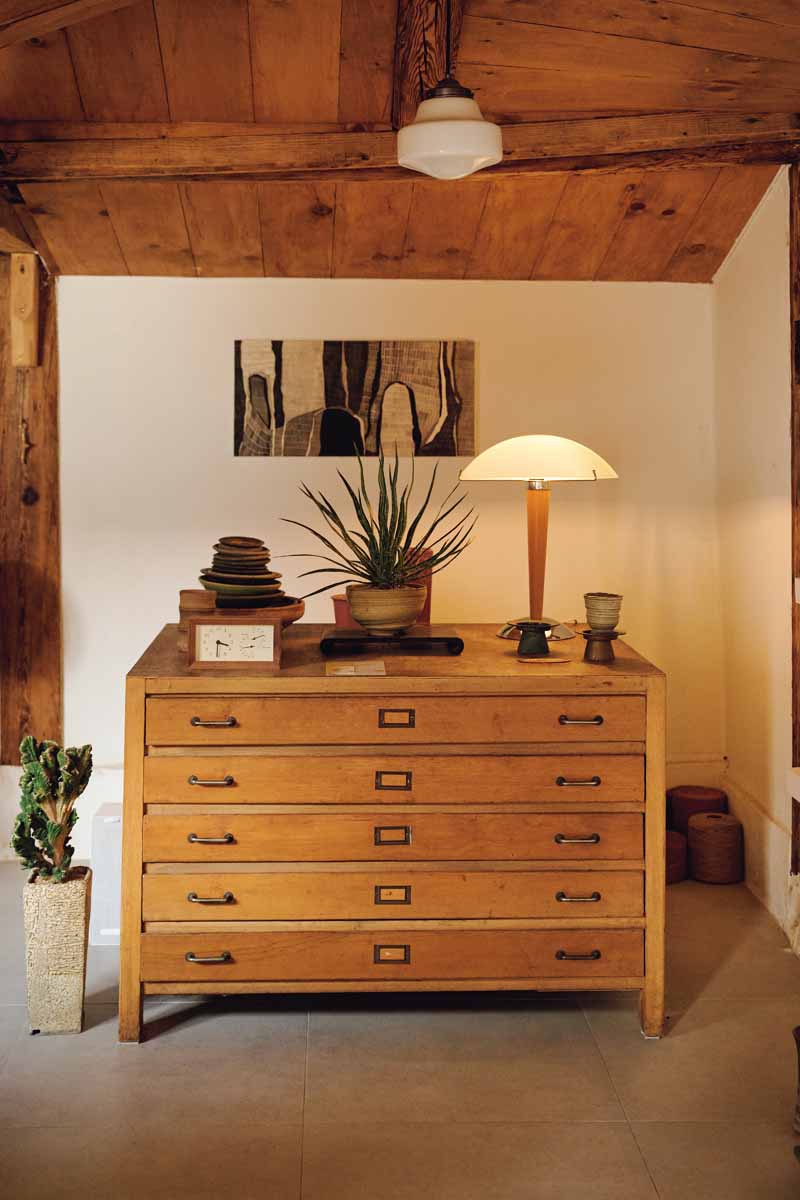
Yu mostly works with Korea’s native plant species. He also collects antique furniture, pots and other objects that complement his bunjae’s understated beauty. Shown here is a vintage file cabinet that Yu found after combing through neighborhoods across Seoul.